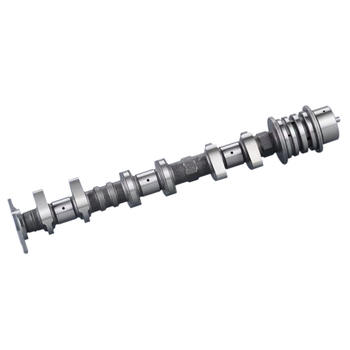The Unsung Heroes of Commercial and Industrial Engines
Have you ever wondered what keeps those powerful commercial and industrial engines running? The answer lies in a critical component - heavy-duty crankshafts. These engineering marvels convert linear piston motion into rotational force, enabling engines to produce the power required for various applications.
Designing Heavy-Duty Crankshafts
Interestingly enough, crankshaft design is a complex process that involves careful consideration of factors such as size, weight, and material. Engineers must strike the perfect balance between strength and weight to ensure optimal performance and durability. In my experience, a well-designed crankshaft can significantly impact an engine's efficiency and lifespan.
Selecting the Right Materials
When it comes to heavy-duty crankshafts, material selection plays a crucial role in determining their strength and longevity. Commonly used materials include cast iron, steel, and forged steel. Each material has its unique properties and advantages, making it suitable for specific applications. For instance, forged steel is often preferred for its high strength-to-weight ratio and superior fatigue resistance.
Manufacturing Processes
There's more to creating heavy-duty crankshafts than meets the eye. The manufacturing process involves several steps, including casting, forging, machining, and heat treatment. These processes help achieve the desired shape, size, and mechanical properties of the crankshaft. It's fascinating how intricate the process is, ensuring each crankshaft meets the stringent requirements of commercial and industrial engines.
Maintaining Heavy-Duty Crankshafts
Proper maintenance is vital to ensure the longevity and performance of heavy-duty crankshafts. Regular inspections and timely repairs can help prevent catastrophic failures and expensive downtime. Some essential maintenance practices include checking for wear, cracks, or other damage, and ensuring proper lubrication and alignment.
Actionable Tips for Crankshaft Maintenance
The Future of Heavy-Duty Crankshafts
As technology continues to evolve, so does the world of heavy-duty crankshafts. Engineers are constantly exploring new designs, materials, and manufacturing techniques to improve performance, reduce weight, and increase efficiency. It's an exciting time for the industry, and many experts agree that we can expect significant advancements in the coming years.
In Conclusion
Heavy-duty crankshafts are a testament to the power of engineering and innovation. As the backbone of commercial and industrial engines, they play a crucial role in driving our world forward. By understanding their design, materials, and maintenance requirements, we can ensure they continue to deliver the performance and reliability we've come to expect. So, the next time you marvel at a powerful engine, remember the unsung hero at its heart - the heavy-duty crankshaft.




